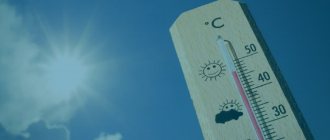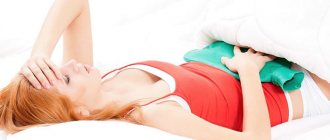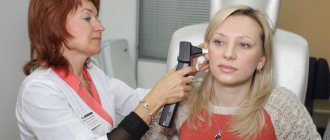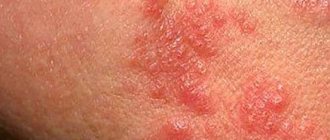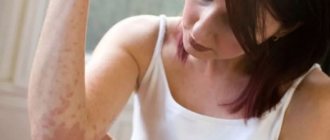10.06.2019
Interesting
Natalia Adnoral
Heat is energy. Internal heat is both a result and a condition for the natural functioning of our body. External is a necessary factor in maintaining his life. But everything is good in moderation. Both a lack and an excess of thermal energy are destructive for all living things. Especially for a person with his “narrow comfort zone”.
What is the essence of sunstroke?
Doctors use this term to describe overheating of the body. “This is a condition that can occur when a person’s body becomes too hot,” comments Andrey Besedin, Ph.D., family doctor at GMS Clinic. - Sunstroke causes damage to the central nervous system. This condition can occur both during exposure to the sun and several hours later.” Our body is able to regulate body temperature quite well: for example, when it increases, sweating is activated.
But sometimes there are glitches in this process. “Heat stroke occurs when compensatory mechanisms cannot cope with heat transfer, and body temperature rises significantly,” says Ivan Golubev, a therapist at the MEDSI Clinical Diagnostic Center in Grokholsky Lane. “Because of this, inflammatory reactions in the body are activated, which can result in failure of various organs and systems. Possible failure of the nervous system, muscles, liver, kidneys, lungs and heart.”
List of sources
- Litvitsky P. F. Pathophysiology. M. GEOTAR-Media. 2006. T. 1. P. 201-244.
- Guide to emergency medical care // Ed. S.F. Bagnenko, A.L. Vertkina, A.G. Miroshnichenko, M.Sh. Shubutia - M.: GEOTARMEDIA, 2007. - 816 p.
- Litvitsky P.F. Disturbances in the body’s thermal balance: hyperthermia, hyperthermic reactions, heat stroke, sunstroke // Issues of modern pediatrics. - 2010. - T. 9. - No. 1.
- Pikovsky V. Yu., Kozlov A. V. General overheating (heat stroke) / Medical Bulletin. - 2007. - No. 3.
- Chernysheva O.E., Yulish E.I., Krivushchev B.I., Soroka Yu.A. Hyperthermic syndrome in children: developmental mechanisms, course features, methods of therapy // Journal “Child's Health”. 2012. - p. 61-64.
Causes of sunstroke
As a rule, this condition is caused by prolonged exposure to the open sun in the heat. “Sunstroke can also occur with high physical activity in dry, windless weather,” adds Ivan Golubev. That's why experts don't recommend exercising outside in the heat.
Several factors increase your risk of sunstroke. These, according to Valery Vasiliev, rehabilitation doctor, kinesiotherapist, osteopath, include the following:
- Direct exposure to the sun on an uncovered head;
- Overweight, obesity;
- Clothes that are too tight and tight;
- Staying in poorly ventilated areas;
- Cardiovascular and endocrine diseases;
- Neurological problems;
- State of alcoholic intoxication;
- Smoking.
“Excessive sun exposure is dangerous for everyone. People who are weakened, overtired, suffering from cardiovascular diseases, thyrotoxicosis, and obesity should be especially careful. Children and elderly people overheat easily,” adds Valery Vasiliev.
The risk of overheating is reduced by proper drinking regimen, loose, well-ventilated clothing made from natural fabrics and a hat, and reducing the time spent in the open sun during the heat of the day to a minimum.
Diet
There is no special diet, however, to reduce the risk of heat constriction in the summer, it is recommended to correct the diet: increasing the proportion of vegetables and fruits, fermented milk products with a decreasing proportion of fatty meat foods, pickles, and smoked products. Among protein products, preference should be given to river/sea fish, various seafood, chicken/quail eggs, and low-fat cottage cheese.
Drinking a sufficient amount of liquid (green/herbal tea, fruit juices, still mineral water, kvass), limiting the intake of alcohol-containing drinks, strong coffee.
Signs of sunstroke
The first symptoms of sunstroke are fatigue, headache, dizziness, and a feeling of “ache” in the body. “There is also a chance of nausea and vomiting. A little later, tinnitus, shortness of breath, rapid heartbeat, and darkening of the eyes may appear, warns Ivan Golubev. - At this stage it is important to provide assistance! Further overheating leads to rapid damage to the central nervous system (CNS), cyanosis of the face occurs, severe shortness of breath, the pulse becomes frequent and weak. This is accompanied by muscle cramps and hallucinations. Breathing becomes uneven, thoughts are confused, and delirium occurs. The victim may lose consciousness at any moment.”
Other signs of sunstroke should also alert you. “When overheated, patients complain of weakness, “weakness,” drowsiness, headache, thirst, nausea, tachycardia, shortness of breath, body temperature rises to 40-41˚C,” adds Andrey Besedin. — Almost always the patient has psychosomatic problems (loss or confusion, inability to get up, dizziness, etc.). This is a medical emergency that must be treated quickly because it can cause death."
According to doctors, some symptoms of sunstroke can be confused with signs of a stroke, severe allergies to certain medications, acute bacterial infections and thyrotoxic crisis. “All of these conditions, including heat stroke itself, can be extremely dangerous, so you should not make a diagnosis yourself. In this situation, it would be correct to immediately call an ambulance team,” warns Ivan Golubev.
While waiting for paramedics, the victim must be given first aid.
Tests and diagnostics
Heatstroke requires quick emergency action from the emergency physician, so in practice instrumental/laboratory tests are not performed. The diagnosis is made at the prehospital stage based on an assessment of the clinical picture, temperature measurement, physical data (tachycardia, decreased blood pressure, increased breathing) and, as a rule, does not present any difficulties. Tests are prescribed for moderate/severe condition of the victim after first aid has been provided and the patient has been hospitalized in a hospital. A clinical/biochemical blood and urine test and a coagulogram are prescribed.
First aid for sunstroke
The main rule here is to quickly move to a cool room and gradually reduce body temperature.
“If you were unable to protect yourself from exposure to the sun or you need to provide first aid to a person with sunstroke, then, of course, it would be best to consult a doctor, and until he arrives, move to a shaded place or a cool room where there is enough oxygen and a normal level of humidity and get rid of outer clothing. You also need to drink cool water, preferably mineral water, or regular water, but with added sugar and salt on the tip of a teaspoon. This will help restore the water-salt balance,” advises Valery Vasiliev. You should also place the patient on his back and begin to gradually cool his body using physical methods. “You can blow on an undressed patient, make a wet wrap, spray water at room temperature on him, apply “cooling” bags to the armpits and groin areas, and neck,” adds Andrey Besedin.
If for some reason it is impossible to undress, remove at least those items of clothing that are squeezing your chest and neck: unbutton your shirt collar, loosen your belt.
All these methods will help reduce body temperature to normal values and restore the functioning of the cardiovascular and respiratory systems.
How to avoid sunstroke?
The simplest thing is to moderate your exposure to the sun in hot weather, but if this is not possible, follow these rules:
- Avoid intense physical activity outdoors on hot sunny days between 11:00 and 17:00, or stay in the shade of trees.
- Choose the right clothes - light, loose, made of cotton fabrics; Be sure to wear a hat.
- Keep an eye on your water balance. “Maintain a water regime at the rate of 30 ml of liquid per 1 kg of your own weight,” recommends Valery Vasiliev.
“The loss of fluid should be restored gradually, using for this purpose chilled mineral water, weakly brewed green tea, and natural diluted juices. It is also worth limiting the consumption of fatty and protein foods,” adds Andrey Besedin.
- Do not drink alcohol or other psychotropic drugs that affect thermoregulation processes. “And finally, remember that a healthy body is less susceptible to external factors. Therefore, your daily routine, diet (in particular drinking regimen) and regular physical activity should be your faithful companions on an ongoing basis. Consider all these recommendations, follow safety measures in the sun, and then sunstroke will bypass you,” sums up Valery Vasiliev.
In children
Heat stroke in a child is quite common. In newborns, on days 3-5, transient hyperthermia , manifested by a sudden increase in temperature to 38-39°C, which disappears on its own. Transient hypothermia is caused by the immaturity of thermoregulation processes and develops as a process of adaptation during the transition to the postnatal life of the child. It can be caused by dehydration of the child, prematurity, birth injuries, overheating of the child, etc.
Especially often, children develop hyperthermic syndrome against the background of various infectious diseases ( pneumonia , influenza , sepsis ), infectious/toxic-allergic conditions, dehydration, respiratory distress syndrome, due to birth injuries.
Hyperthermic syndrome in children is accompanied by rapidly increasing weakness, pale skin, adynamia, chills, and refusal to eat and drink. In the absence of timely assistance, speech/motor agitation, convulsions , hallucinations , frequent shallow breathing, drop in blood pressure , tachycardia , and peripheral vasospasm appear. Loss of consciousness and asphyxia, leading to death, are often observed.
When diagnosing children with fever, it is necessary to distinguish between “white” and “red” hyperthermia, which is due to the difference in prognosis and approach to treatment.
"Red" hyperthermia. It is characterized by the correspondence of the heat transfer process to the heat production process and is prognostically more favorable. With this form, the skin is moist, hot, moderately hyperemic, the limbs are warm; increased respiration/pulse corresponds to increased temperature, the child’s behavior is not changed.
"White" hyperthermia. Characterized by a discrepancy between heat production and heat transfer. It manifests itself as pallor (marbling) of the skin with a cyanotic tint to the lips, nail beds, and a positive “white spot” symptom. of breath , excessive tachycardia are characteristic , the child’s behavior is disturbed (lethargy, indifference), delirium and convulsions are possible. White hyperthermia is a prognostically unfavorable form, and the effect of antipyretics in this form of hyperthermia is insufficient.
Emergency care for hyperthermic syndrome in children is carried out depending on the form of hyperthermia.
For “red” hyperthermia it is necessary:
- Expose (expose) the child as much as possible, ensuring sufficient access to fresh air.
- Carry out physical cooling methods: cold on the area of large vessels, a wet cold bandage on the forehead, blowing with a fan, water-vinegar rubdowns.
- Drink plenty of fluids, exceeding the age norm of fluid by 0.5-1 l/day.
- Prescription orally/rectally Ibuprofen , Paracetamol .
In case of “white” hyperthermia, cold wraps are strictly contraindicated, as this will aggravate the microcirculation disorder. To increase heat transfer/improve peripheral blood circulation and vascular microcirculation, a child must be prescribed vasodilators simultaneously with taking antipyretics: Papaverine / No-shpa together with Analgin , Eufilin , Pipolfen nicotinic acid solution . If there is no effect, prescribe steroids: Hydrocortisone , Prednisolone . For severe agitation, anxiety, and convulsions, Seduxen / Sodium Oxybutyrate .
All children with hyperthermic syndrome and intractable “white” hyperthermia should be hospitalized immediately after emergency care. Timely emergency care for hyperthermia is especially important for children at “risk” for the development of complications, which include children under 6 months; pathology of the central nervous system; history of febrile seizures, lung/heart disease.
